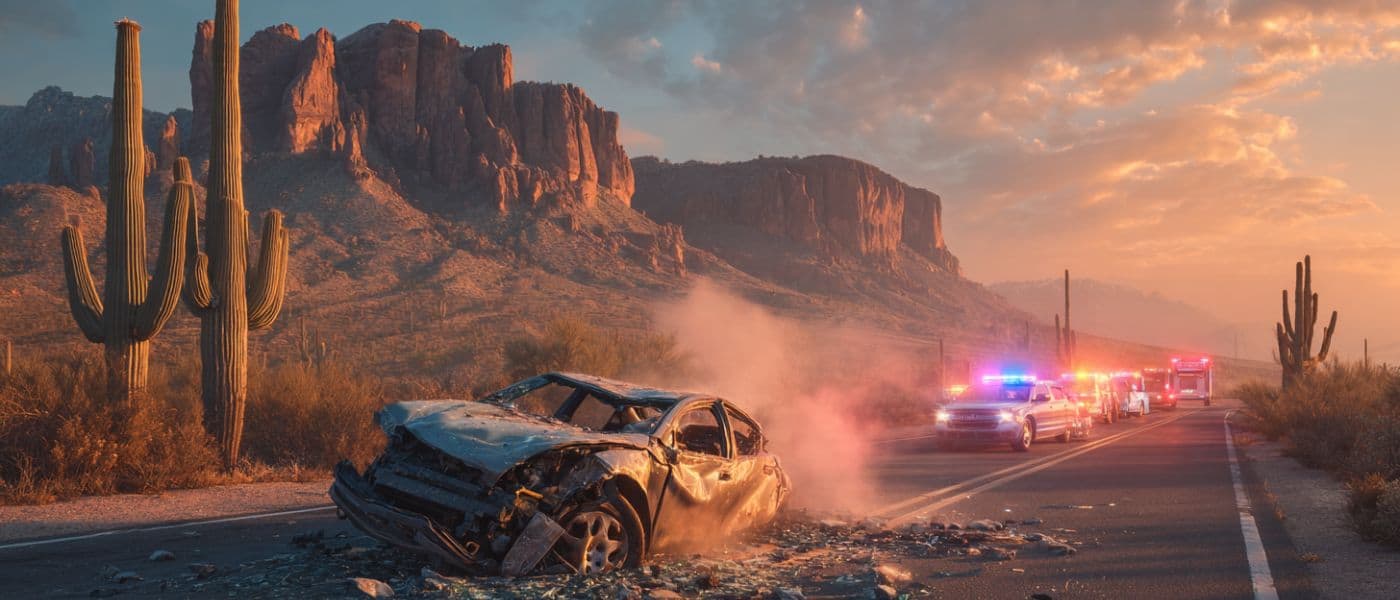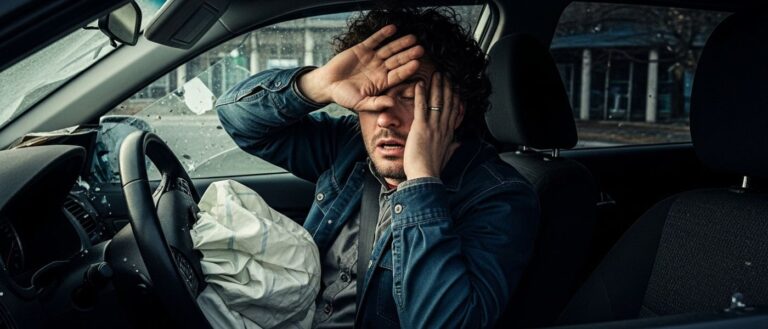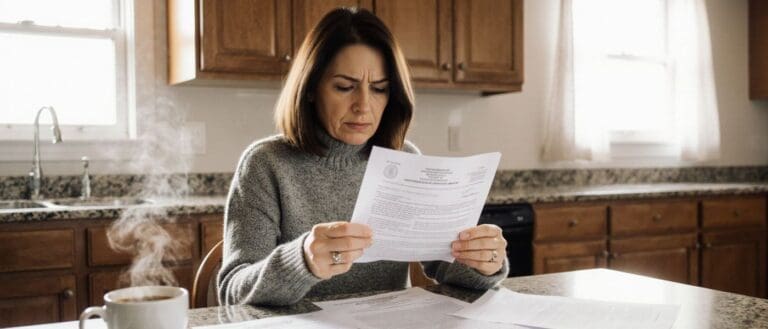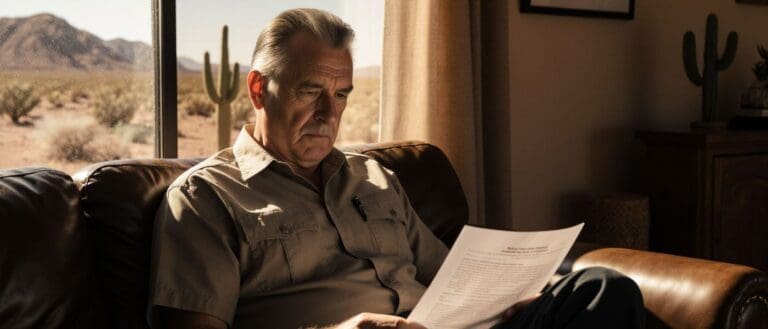How is fault determined in a car accident in Arizona?
In Arizona, the driver found at fault in a car accident is responsible for paying for the damages, and their insurance company is responsible for covering them. Fault gets decided by weighing evidence like police reports, what witnesses say, and whatever photos or videos people manage to snap at the scene. If both drivers messed up, Arizona uses a system where each person’s share of the blame determines what they pay or can collect for damages.
Figuring out how fault works really matters; it decides who’s stuck with the bills for injuries, car repairs, and everything else that piles up after a crash. Arizona’s rules aren’t exactly simple, so it’s smart for drivers to know what kind of evidence actually helps, and how what they do right after the accident could shape what happens next.
How Fault Is Determined in Arizona Car Accidents
Arizona runs on a fault-based system when it comes to car accident claims. Evidence, legal rules, and the nitty-gritty details of negligence all play a part in figuring out who’s actually responsible after a crash.
The Role of Negligence in Fault
Negligence is the backbone of fault in Arizona car accidents. If a driver fails to use reasonable care and that leads to a crash, they’re considered negligent. This covers stuff like speeding, texting behind the wheel, or blowing through a stop sign.
Arizona uses a “pure comparative negligence” system. That basically means more than one person can be blamed. Each driver’s share of fault is set as a percentage—insurance companies or the court decide the numbers. Say one driver’s 80% at fault and the other’s 20%; their payouts (or what they owe) get split the same way.
Eyewitness accounts, police write-ups, and scene photos are all crucial for proving who acted carelessly. Insurance adjusters and lawyers dig through these details to pin down what role each person played.
Duty of Care and Breach of Duty
Every Arizona driver has a legal responsibility, a “duty of care.” That means driving safely, following speed limits, yielding, and generally not being reckless.
If a driver breaks this duty, maybe by running a red light or texting while driving, that’s a breach of duty. Once it’s proven someone broke the rules, they can be held partly or fully responsible for what happened.
Investigators look at accident evidence, car damage, and statements from everyone involved to figure out if a breach occurred. They’re basically matching people’s actions to what the law expects.
Causation and Damages
But even if someone acts carelessly, that alone doesn’t make them at fault unless their actions actually caused the crash and resulted in real losses. That’s called “causation.” In legal speak, the driver’s behavior has to be a key reason the accident happened.
Damages in Arizona car accidents can be anything from medical bills and lost paychecks to car repairs and just plain pain and suffering. Proving these losses usually means bringing in hospital records, repair invoices, and pay stubs. Without solid proof, getting compensation is tough.
Causation and damages get pieced together with official documents, photos, and sometimes expert opinions. Insurance companies and courts want to see a clear connection between what the driver did, the accident itself, and the costs that followed.
Arizona’s Comparative Negligence Law
Arizona’s pure comparative negligence system changes how blame gets split after a crash—and how much money people can actually get or have to pay. It’s a core part of how drivers, insurance claims, and court cases play out here.
Pure Comparative Negligence Explained
Under Arizona law, everyone involved in a car accident gets assigned a percentage of fault. Even if a driver is mostly to blame, they’re not totally blocked from recovering damages. Instead, whatever they collect is chopped down by their percentage of fault.
For instance, if someone’s 80% at fault and the crash costs total $10,000, they could still recover $2,000 (their 20% share). There’s no minimum threshold for collecting damages. The only people who can’t recover anything are those who caused the crash on purpose or acted with wild recklessness—state law’s pretty clear about that.
Comparative Fault Rule in Practice
This comparative fault idea kicks in during insurance claims and lawsuits. Police reports, witness statements, expert opinions, and physical evidence all help sort out each person’s share of the blame. Sometimes, insurance companies even check traffic cam videos or bring in accident reconstruction specialists.
In court, a judge or jury decides who’s at fault and by how much. It’s not unusual for blame to be shared between drivers—or even with pedestrians or cyclists, depending on the situation.
Key points in practice:
- Percentages of fault: Each party gets a specific number.
- Multiple parties: More than one person can be responsible.
- Legal decisions: Courts use these numbers to figure out who pays what.
Impact on Damages and Settlements
This pure comparative negligence setup directly changes the math on damages and settlements. The total an injured person gets is chopped down by their own share of fault.
So, if two drivers are each 50% to blame, they can only recover half of their damages from the other. Insurance payouts and settlement offers reflect these percentages, like it or not.
This system tries to be fair and flexible. It gives both sides a reason to negotiate, knowing that fault percentages will affect the final payout. Arizona law lets drivers recover money even if they were mostly at fault, as long as their actions weren’t intentional or outrageously reckless. That’s something to keep in mind before accepting a settlement or heading to court.
Evidence Used in Determining Fault
Who’s at fault in an Arizona car accident depends mostly on how strong and detailed the evidence is. What gets collected right after the crash can really sway how insurance companies and courts see things.
Police Report and Documentation
The police report is a big deal after any Arizona crash. Officers jot down what they see, note the time and weather, and talk to everyone involved.
The report usually has a diagram of the accident and might even say who the officer thinks is at fault, based on what they found. It lists visible car damage, injuries, and everyone’s statements.
Insurance companies lean heavily on these reports when reviewing claims. If there’s a dispute, the officer’s notes might even end up in court. A thorough, accurate police report can tip the scales.
Eyewitness Statements and Testimony
Eyewitnesses can really matter—they offer outside perspectives on what happened. Their statements fill in details about how the crash unfolded, what each driver did, and whether any laws got broken.
Officers usually talk to bystanders, passengers, or other drivers at the scene. These statements—written or recorded—become part of the official file.
List: Typical Eyewitness Contributions
- Time and direction of each vehicle
- Signals or stops made by drivers
- Speed or reckless driving observations
Sometimes, courts or insurance adjusters will follow up with witnesses later. If their stories line up with the physical evidence, that can really shift how blame gets assigned.
Role of Photographs and Physical Evidence
Photos can be powerful—they capture the accident scene as it was. Pictures of where the cars ended up, street signs, skid marks, and damage all help piece together what actually happened.
Common types of physical evidence include:
- Photos of car damage
- Debris or glass patterns
- Tire marks or gouges in pavement
- Weather and road conditions visible in photos
Snapping shots from a few different angles gives a fuller picture. Insurance adjusters and courts use these images to check if the stories make sense with what’s visible at the scene.
Physical evidence either backs up or challenges what drivers or witnesses say. The more thorough the documentation, the easier it is to sort out who’s really at fault.
Involvement of Insurance Companies
Insurance companies are right in the thick of things after an Arizona car accident. They review every claim, figure out who’s at fault, and decide what their policies actually cover.
Claims Investigation Process
Once a driver reports a crash, the insurance company launches its claims investigation. Adjusters gather police reports, photos, and statements from drivers and witnesses. They’re looking for the who, what, when, and where—plus any signs that someone broke the rules.
Sometimes adjusters visit the scene or check out the damaged vehicles. Insurers might even use diagrams or accident reconstruction software to get a clearer sense of what happened. All this evidence helps them build a timeline and figure out the sequence of events.
The idea is to pull together enough facts to judge fault as accurately as possible. Every bit of evidence is weighed against each driver’s version of events.
Evaluation of Liability and Coverage
After the facts are in, the insurer figures out liability—meaning, who caused the crash and whether more than one person shares the blame. Liability insurance is the main thing under the microscope, since it’s what pays for damages when a driver’s legally at fault.
Arizona’s “comparative fault” principle comes into play here. If responsibility is shared, fault is split by percentage—maybe 70% for one driver, 30% for the other. Each insurance company pays out according to their driver’s share.
The insurer also checks policy limits, exclusions, and what kind of coverage is in place. Only covered losses get paid.
Negotiating a Fair Settlement
Once liability and coverage are sorted, the insurer works with the other parties to hammer out a settlement. That’s money for things like medical bills, car repairs, or lost income—whatever the policy allows.
Often, the person making the claim or their lawyer negotiates with the insurance company. They might bring in more evidence or debate the legal side of fault. If the first offer seems low, they’ll probably push for a higher amount, pointing to stronger evidence or bigger losses.
If everyone agrees, the case settles and payment goes out. If not, it might end up in court, where a judge or jury decides. The insurance company’s job is to settle valid claims fairly, sticking to the contract and Arizona law.
Legal Considerations and Arizona Traffic Laws
Arizona uses an at-fault system for car accidents. State laws spell out how drivers should act and what happens when those rules get broken. There are also strict deadlines for when a lawsuit has to be filed after a crash, so waiting too long can really cost you.
Key Arizona Car Accident Laws
Arizona car accident laws expect drivers to follow traffic rules—the basics, like not speeding or running red lights. If someone breaks a law and causes a crash, they’re likely on the hook legally.
Police will usually write up a report after a collision, jotting down what they see and what might’ve caused it. Insurance companies rely on these reports to figure out who pays for what.
Drivers in Arizona have to stop and swap info after any accident, even if it’s just a fender-bender. Skipping this step can mean criminal charges, not just a civil lawsuit.
Understanding Fault-Based vs. No-Fault States
Arizona is an “at-fault” state for car accidents. So, the person who caused the wreck is responsible for damages. If you’re hurt, you can file a claim with their insurance, sue them, or try other legal routes.
In contrast, “no-fault” states have everyone file with their own insurance, regardless of blame. Arizona doesn’t do that.
Statute of Limitations
Arizona law gives you a deadline—called the statute of limitations—to file a lawsuit after a car accident. Typically, you get two years from the date of the crash to sue the at-fault driver. File too late, and the court will almost always toss your case.
This deadline makes it smart to start gathering evidence and maybe talk to a lawyer pretty soon after the accident. There are a few exceptions, but they’re rare and pretty specific—so most folks need to stick to the two-year window.
Miss that statute of limitations, and that’s it. No matter how strong your case, you lose your shot at damages.
Damages and Compensation in Arizona Car Accident Cases
In Arizona, who pays after a car accident depends on who’s at fault. Victims can try to get paid back for stuff like medical bills, lost wages, and car repairs. The law splits damages into different buckets, depending on whether it’s about money or the harder-to-measure stuff.
Types of Damages: Economic and Non-Economic
Arizona sorts damages into economic and non-economic categories.
Economic damages are the obvious ones—medical bills, lost paychecks, repair costs. Non-economic damages are trickier: pain, suffering, loss of enjoyment of life, and so on.
If you can prove your losses, you might get both. Sometimes, non-economic damages end up being the bigger part, especially with serious, long-lasting injuries. Arizona doesn’t cap non-economic damages, so the amount can reflect the real impact—whatever that looks like for you.
Medical Expenses and Lost Wages
If you’re hurt in a car crash, you can claim medical expenses tied to the accident. That covers:
- Hospital bills
- Doctor appointments
- Surgery
- Medications
- Physical therapy
Hang onto every receipt and record—it matters. Lost wages are also fair game if you miss work. You’ll need proof, like pay stubs or tax forms. If the injury messes with your future earning power, you might recover for that, too.
Property Damage and Vehicle Repairs
Property damage claims mostly deal with fixing or replacing your car. The other driver’s insurance usually covers repairs. Stuff inside the car, like electronics or car seats, can sometimes be included.
Usually, claims pay for repairs up to what the car was worth before the crash. If repairs cost more than the car’s value, it’s a total loss and you get the pre-accident value. Photos and repair estimates help a lot here.
Disability and Disfigurement Claims
Some accidents leave lasting marks—disability or disfigurement like paralysis or major scarring. Victims can ask for compensation for these life-changing impacts, covering both ongoing medical needs and the emotional fallout.
Disability claims might include future medical bills, long-term care, or special equipment. Disfigurement claims cover not just physical pain but also things like lost confidence or depression. Medical records, therapist notes, and counselor input can all help show what you’re living with day to day.
Working With Legal Professionals
Figuring out how legal professionals fit in after a car accident in Arizona is a big deal. The right help can change everything—from how evidence is collected to whether you actually get what you deserve.
Role of Car Accident Lawyers
Car accident lawyers dig through evidence, talk to witnesses, and interpret those police reports. They’ll walk you through Arizona’s fault system and what steps to take next. Lawyers handle insurance companies and negotiate for you, so you don’t have to do the back-and-forth yourself.
They collect photos, repair estimates, medical records—the works—to build a solid case. They’ll help you decide whether to settle or go to court, and they make sure you don’t miss deadlines like the two-year limit.
Having an experienced lawyer? It can make the whole process less stressful. You get to focus on healing while they handle the legal mess.
When to Consult a Car Accident Attorney
It’s usually smart to reach out to a car accident attorney soon after a crash—especially if you’re hurt, fault isn’t clear, or the property damage is serious. Lawyers can deal with insurance from the start and help you avoid mistakes that could hurt your case down the road.
Sometimes, injuries or complications don’t show up right away. Getting an early consult helps protect your rights, even if things get complicated later. An attorney can also walk you through potential compensation, like lost wages or medical bills, and make sure key evidence doesn’t go missing.
Most offer a free consult, so you can get a sense of your options before deciding what to do next. If you have questions about the process, that’s the time to ask.
Legal Consequences of Being at Fault
Getting blamed for a car accident in Arizona? That can open up a whole can of legal and financial headaches. If you’re the one at fault, you’re usually on the hook for paying damages—think medical bills, fixing up the other car, maybe even a few other expenses that really add up fast.
Oh, and don’t be surprised if your insurance rates shoot up after an at-fault accident. If the bills are bigger than what your insurance covers, you could end up paying out of your own pocket. Sometimes things get messy enough that folks wind up in court, especially when no one can agree on who’s really at fault or how much should be paid.
Honestly, having a lawyer in your corner makes a difference—they’ll walk you through what “at fault” actually means in Arizona and help you figure out how to minimize the fallout. Let’s face it, understanding what you’re up against is half the battle.







